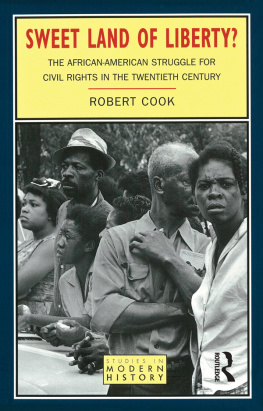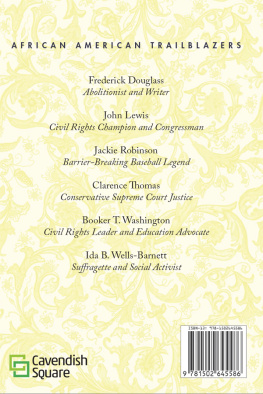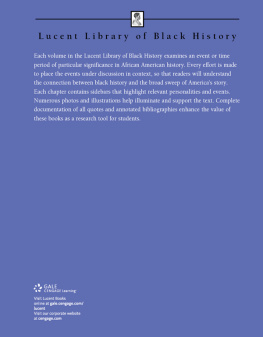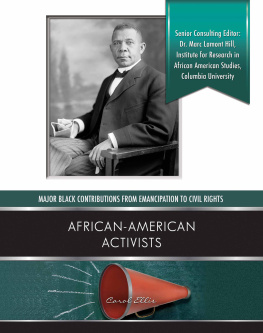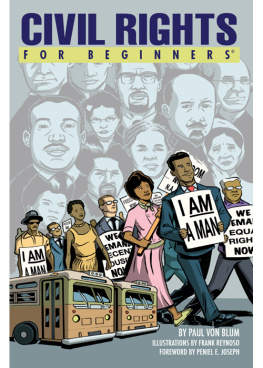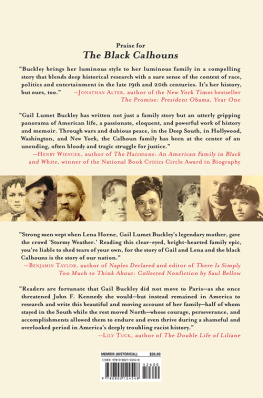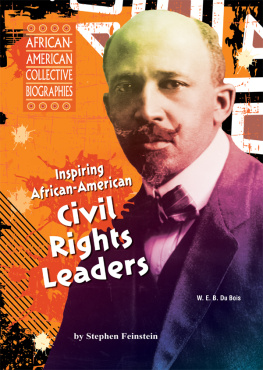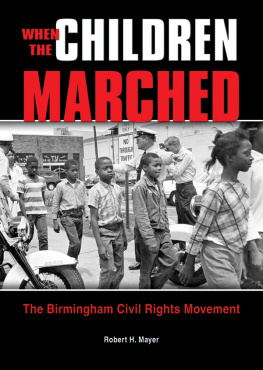Civil Rights and the Environment in African-American Literature, 18951941
Environmental Cultures Series
Series Editors:
Greg Garrard, University of British Columbia, Canada
Richard Kerridge, Bath Spa University
Editorial Board:
Frances Bellarsi, Universit Libre de Bruxelles, Belgium
Mandy Bloomfield, Plymouth University, UK
Lily Chen, Shanghai Normal University, China
Christa Grewe-Volpp, University of Mannheim, Germany
Stephanie LeMenager, University of Oregon, USA
Timothy Morton, Rice University, USA
Pablo Mukherjee, University of Warwick, UK
Bloomsburys Environmental Cultures series makes available to students and scholars at all levels the latest cutting-edge research on the diverse ways in which culture has responded to the age of environmental crisis. Publishing ambitious and innovative literary ecocriticism that crosses disciplines, national boundaries, and media, books in the series explore and test the challenges of ecocriticism to conventional forms of cultural study.
Titles available:
Bodies of Water, Astrida Neimanis
Cities and Wetlands, Rod Giblett
Climate Crisis and the 21st-Century British Novel, Astrid Bracke
Ecocriticism and Italy, Serenella Iovino
Literature as Cultural Ecology, Hubert Zapf
Nerd Ecology, Anthony Lioi
The New Nature Writing, Jos Smith
The New Poetics of Climate Change, Matthew Griffiths
This Contentious Storm, Jennifer Mae Hamilton
Forthcoming Titles:
Colonialism, Culture, Whales, Graham Huggan
Eco-Digital Art, Lisa FitzGerald
Romantic Ecologies in Postcolonial Perspective, Kate Rigby
Civil Rights and the Environment in African-American Literature, 18951941
John Claborn
Bloomsbury Academic
An imprint of Bloomsbury Publishing Plc

Contents
Many friends, mentors, and fellow travelers have helped turn a dim idea about race and nature into a brighter beam. This book is the product of some offhand remarks about ecocriticism and African-American literature in William J. Maxwells spring 2007 graduate seminar. Over the years, this project grew out of my dissertation, Ecology of the Color Line: Race and Nature in American Literature. Many thanks go to my doctoral committee and especially my codirectors, William J. Maxwell and Michael Rothberg. Michael Rothberg has been generous with his counsel, friendship, and almost superhuman ability to provide timely feedback on all my writing. Both have been reliable and conscientious editors, mentors, and friends. Spencer Schaffner and Stephanie Foote offered invaluable advice and feedback during the process. I also want to thank Debra Hawhee and Mark C. Thompson for their crucial input at the beginning stages of this project.
The Universities of Illinois and Louisville have kept me employed during precarious times. My activist friends in the Graduate Employees Organization and the Non-Tenured Faculty Coalition: knowing that they were fighting indefatigably to improve working conditions for teachers and scholars in higher education kept me resilient through this project. I also want to thank a number of friends, critics, and coworkers: Michael Burns, Ann Hubert, Marilyn Holguin, Mia McIver, Dave Morris, Christy Scheuer, Nicole Seymour, Michael Simeone, and Katherine Skwarczek. Special thanks go to John Reuland, who has been an intellectual soulmate of sorts since we started a Derrida reading group together in 2005; and also to Christopher Simeone, who has played a vital role in my survival, figuratively and literally.
Greg Garrard, one of the editors of the Environmental Cultures series, has consistently been a supporter of my work. In 2011, I had a debate with Greg in ISLE over the value of Heidegger for ecocriticism. Since then, Greg has spotlighted my work in his YWCCT review of the MFS article version of .
For support more indirect, I go to my family. For their love and kindness, I thank my stepparents, Bob Engel and Belinda Claborn, as well as my sister and brother-in-law, Jennifer and Matt Holler. I thank my grandparents, Al and Theresa Ferrero, for teaching me the value of education. I thank my father, Tim Claborn, whose intellectual curiosity has always been a model for me. I thank my resilient mother, Alyse Engel, who taught me a love for reading at an early age. This book is dedicated to my parents.
In the shadow of 1919s
Most things are colorful thingsthe sky, earth, and sea.
Black men are most men; but the white are free!
White things are rare things; so rare, so rare
They stole from out a silvered worldsomewhere.
Finding earth-plains fair plains, save greenly grassed,5
They strewed white feathers of cowardice, as they passed;
The golden stars with lances fine,
The hills all red and darkened pine,
They blanched with their wand of power;
And turned the blood in a ruby rose10
To a poor white poppy-flower.
This stanza plays on inversions and reversals. The opening lines identify nature with a multitudinous sea of colors. Nature is integrated color, and white instead of black is absence of color. Spencer also displays her pan-African sensibility, as she provocatively casts people of color in the majority of the worlds population, while whites are the so rare, so rare minority. Rare suggests both the sense of rarity as in few and the sense of rarity as distilled, rarefied material that has lost all attributes and all color. Descending from what is probably the cold climate of northern Europethe silvered worldthey conquer the natural resources and enslave the human labor of Africa and the Americas. Silvered also suggests the invention of silver currencies that helped beget the market processes of abstraction and dehumanization. They scorch the earth, bleaching and blanching the color out of the hills all red, the land greenly grassed, and the pines darkened. White imperialism seeks to wipe the world of all color, of all racial difference. The pagan and phallic wand of power suggests advanced weaponry and technologytools that white things use to conquer.
So far, Spencer retells with a wink the Aryan myth of whitenessof the white race as an ancient race, as eternal as human civilization. But as Du Bois wrote in The Souls of White Folk, whiteness is a modern discovery, an invention of the nineteenth century. The Aryan myth of the first stanza is a modern confabulation. The second and final stanza of White Things slingshots around this myth by moving to more historical and geographical specificity. Now taking place during the historical moment of the Jim Crow South, the poem paints ritual lynching as a sinister dance of death:
They pyred a race of black, black men,
And burned them to ashen white; then,
Laughing, a young one claimed a skull,
For the skull of a black is white, not dull,15
But a glistening awful thing
Made, it seems, for this ghoul to swing
In the face of God with all his might,
And swear by the hell that sired him:
Man-maker, make white!20
While the poem ends by narrowing its scope to a specific time and region, it still emphasizes the large scale of black masses; an entire race, and not just a single black body, is pyred (l. 12). Both the white perpetrator and the black victim are dehumanized through this oxidation of the black body rarefied as whiteness, a white skeleton. The white kid is a young one, nameless, and the victim merely a skull, a white thing of death (l. 14). Both are further dehumanized when the skull become as awful thing and the white youth is a ghoul (l. 17). Turning the white supremacist Christian beliefs of the Ku Klux Klan on their heads, the speaker states that hell rather than heaven sired the white boy in a way that further animalizes whiteness. In the poems Promethean final line, the white will to dominate becomes so consumed with hubris that it satanically barks orders at Godthe Man-makerto change the world white.


